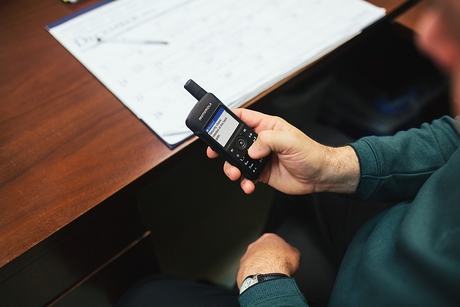Campus comms — boosting safety and reliability

A new radio system has removed black spots and boosted safety for the University of Canberra.
The University of Canberra caters to more than 16,000 students and close to 1000 staff at its campus in the suburb of Bruce, ACT. As with any large site, staff need to be able to communicate clearly and efficiently no matter where they are located.
But the university’s legacy radio system wasn’t keeping up.
“We had a number of black spots in our communication system, with radios virtually working only on line of sight on a campus full of buildings,” says Vittorio Cox, the university’s manager of security, traffic and estate management. “Radios were old and outdated, two repeaters barely or didn’t work, and the decade-old software was too basic for the university’s needs.”
A new system was needed and, through Sydney-based dealer Telechnics, a Motorola MOTOTRBO solution was put in place.
Selecting different handsets based on job roles while retaining interoperability was critical, says Cox. Plain-clothes security managers use the SL4010 radio for its aesthetic appeal; security staff have keypads on the DP4801 for future texting capabilities; and the crisis management team needed communication without the bells and whistles and were therefore allocated the DP4401s.
“Yet all the radios talk to each other,” says Cox. “With four channels now instead of two, the controller can direct people like cleaners or maintenance staff, and exercise more control over frontline staff.
“We have better safety for staff and students,” Cox adds. “With MOTOTRBO, we know which staff member is calling even if they can’t speak for some reason. Although never used, access to the duress function is part of our duty of care. While not the panacea for all ills, it gives security staff peace of mind and they tend to be more robust in their patrolling.”
GPS monitoring (via updated TRBOnet software) also helps with staff safety. The TRBOtact interconnect allows standard phones and help points to access the radio system. For students using the help points located throughout the campus, GPS and location finding helps the controller dispatch the nearest available officer.
“Using GPS, we can establish how effective patrols are and how busy staff are,” says Cox. “We learned that staff do up to 16 km per shift, so now we can manage fatigue and work out how many shifts per week is too many for staff. What was potentially a long-term employment issue can be more effectively managed.”
The university has a dedicated control room and utilises a base station set-up. Two repeaters on separate buildings provide redundancy and the capacity to cope with the unforeseen.
“With lots of remaining bandwidth, we also have a system that grows as the campus expands,” says Cox. “We have four hours backup which automatically switches on… one of the highlights [of the system] is that it will still work in the event of a power outage.
“We simply cannot be offline,” concludes Cox. “The best thing is that the radios work each and every time. It’s a critical service and it works fantastically.”
ACMA releases views on future use of public airwaves
According to ACMA Deputy Chair Adam Suckling, the agency seeks to ensure the greatest benefit to...
New technique to eliminate signals disrupting radio telescopes
An unexpected television signal traced to an aeroplane has led to a new method for pinpointing...
5G: the foundation for connected mobility
5G is the driving force behind safe and connected mobility, transforming the future of vehicles...





